How to use the Redis visual monitoring tool Redislive
RedisLive is a WEB-based Redis graphical monitoring tool written in Python. It is also an open source software that monitors Redis data in real time. It displays the key status, instance data and other information in redis in the form of WEB.
RedisLive’s address on github: https://github.com/nkrode/RedisLive
RedisLive official website English document address: http://www.nkrode.com/article /real-time-dashboard-for-redis
The principle of RedisLive is very simple, which is to use the MONITOR command provided by Redis through the monitoring script to obtain data from the monitored Redis instance and store it in the Redis monitoring instance. Do data analysis.
RedisLive displays the data in the Redis instance in a visual way, analyzing query patterns and peaks. The following picture is the official rendering:

Next, let’s install Redislive together.
1: Installation
The instructions for any software can be found in the official documentation. Let us take centos7 python as an example to illustrate the installation process. First check the python version:
 1. Install pip
1. Install pip
Friends who have learned python should know that pip is a tool for installing and managing python packages. Now we can go to the official website to see Take a look at https://pypi.python.org/pypi/pip.
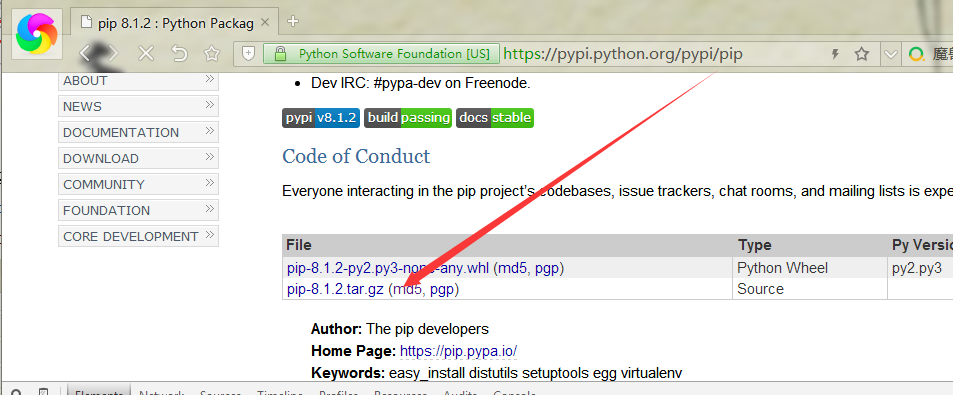

After downloading, we manually unzip it, then enter the root directory of pip-8.1.2 and execute: python setup.py install, but you must have root permissions to execute it. . .
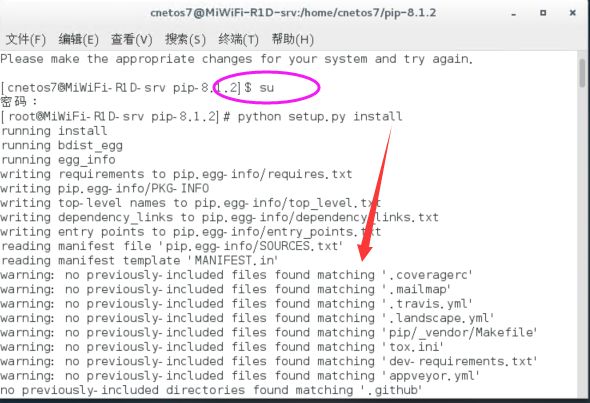
Two: tornado, redis.py, python-dateutil dependencies
On the official website of redislive, we found that these three are We must install the dependencies of the redislive project before we can start our project, which is fucked up. . .
a, tornado
We can install dependencies according to the instructions on the official website, for example, execute the command: pip install tornado
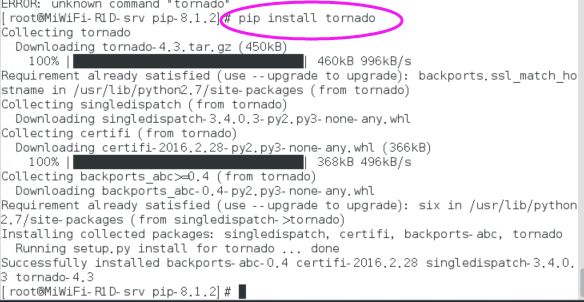
b、redis.py
Then I have to install this silly thing, which is annoying to death. . . Please continue to use the pip package manager to install Redis. The command is: pip install redis

c、python-dateutil
Judging from the name, this toolkit is probably a helper tool such as util. Regardless of it, continue to use the official pip install python-dateutil

As you can see from the above Yes, the python-dateutil tool is already in Python. If you install it again, you need to update it. OK, just update it. . .
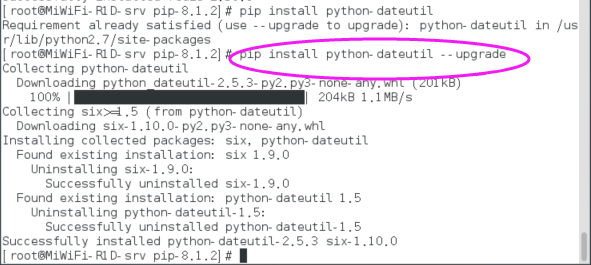
#ok, after installing it here, I am happy and excited. Finally, all the dependencies of redislive have been installed. . .
3: Download the redisLive source code
As you can see from the official website, the source code address is either git or download. Here I will choose the wget method.

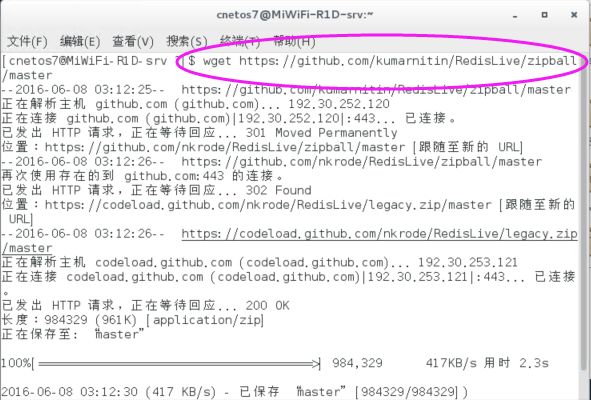
#Then manually unzip it, and this is the hanging sample. . .

But there are three very important things in redislive. . . . As shown below:
1. redis-live.conf
This is the configuration file of redislive. Open it as follows:
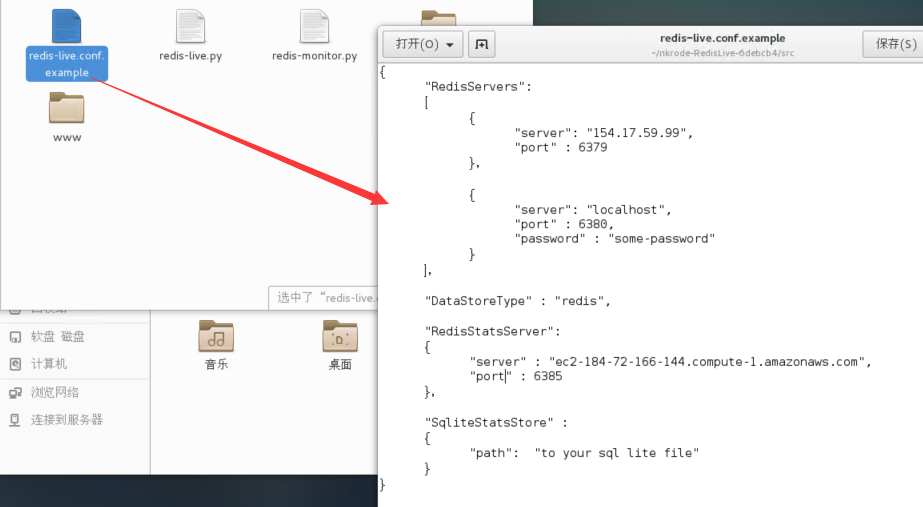
From the configuration file, you can probably see four important nodes:
a, RedisServers
This is the redis port we want to monitor. As can be seen from [], it can be injected One batch. . .
b, DataStoreType
We know that redisLive is a website. Since it is a website, it must also have some website data and statistical information, so we give you two options Options, either redis or sqllite. Here, just choose redis.
c、RedisStatusServer
This node is configured to specify the redis server address when you select datastoretype="redis".
d、SqliteStatusStore
This is also very simple. In the case of datastoretype="sqlite", select the sqlite server address.
Finally, the modified conf file is as follows: [For convenience, the listening server here and the statistics storage server of redislive are both on the same port. It is strongly recommended not to be the same port]
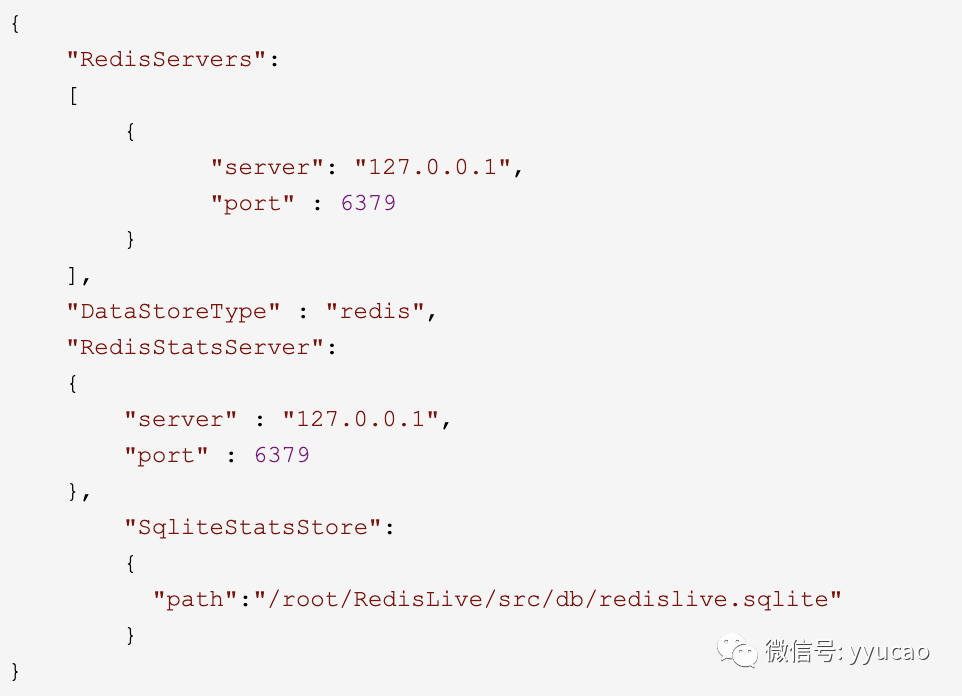
2. redis-monitor.py
This program is used to call the redis monitor command to collect redis commands for statistics, so this program must be executed permanently without Like the official website, it is set to 120s.

Here, I will set --duration=12000000, hehe~~~~
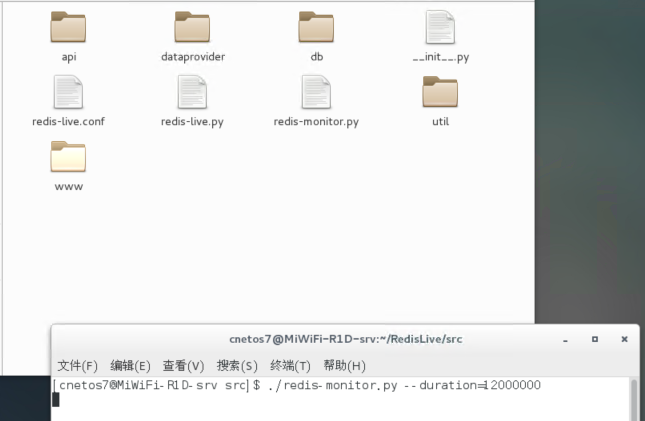
3. redis- python.py
Finally we have reached the last step, start our web site. . . Damn, driving this thing is tiring. . .

At this point, I should be able to open the site on port 8888. Are you feeling excited? Hehe. . . .
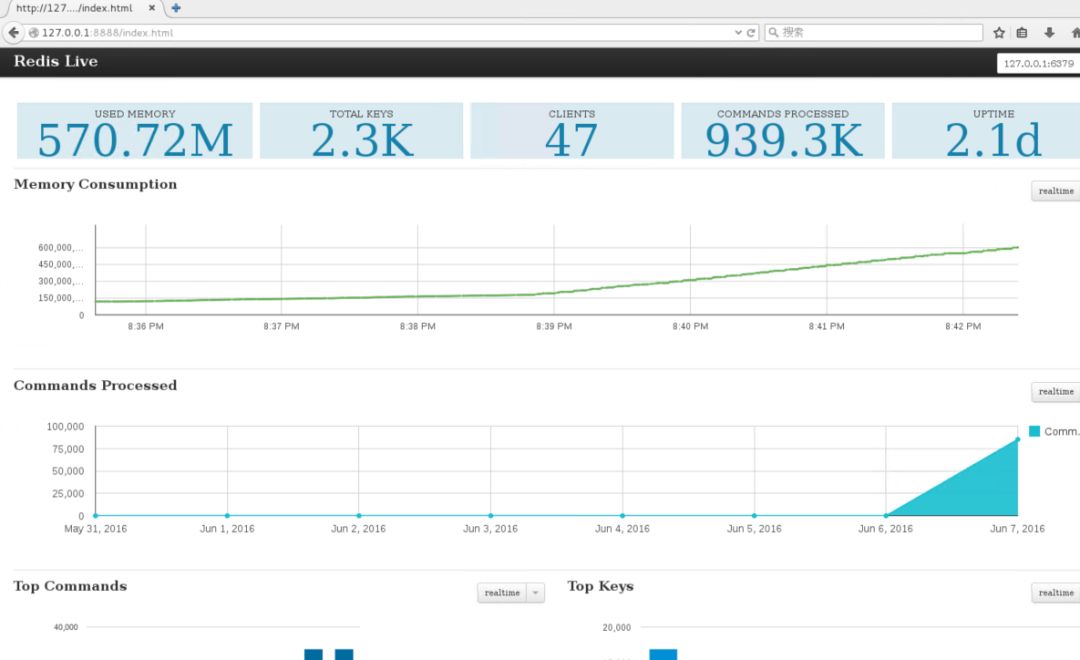
Finally, the site is open. A very beautiful interface is displayed in front of you. . . Be happy. . .
The above is the detailed content of How to use the Redis visual monitoring tool Redislive. For more information, please follow other related articles on the PHP Chinese website!

Hot AI Tools

Undresser.AI Undress
AI-powered app for creating realistic nude photos

AI Clothes Remover
Online AI tool for removing clothes from photos.

Undress AI Tool
Undress images for free

Clothoff.io
AI clothes remover

Video Face Swap
Swap faces in any video effortlessly with our completely free AI face swap tool!

Hot Article

Hot Tools

Notepad++7.3.1
Easy-to-use and free code editor

SublimeText3 Chinese version
Chinese version, very easy to use

Zend Studio 13.0.1
Powerful PHP integrated development environment

Dreamweaver CS6
Visual web development tools

SublimeText3 Mac version
God-level code editing software (SublimeText3)

Hot Topics
 How to build the redis cluster mode
Apr 10, 2025 pm 10:15 PM
How to build the redis cluster mode
Apr 10, 2025 pm 10:15 PM
Redis cluster mode deploys Redis instances to multiple servers through sharding, improving scalability and availability. The construction steps are as follows: Create odd Redis instances with different ports; Create 3 sentinel instances, monitor Redis instances and failover; configure sentinel configuration files, add monitoring Redis instance information and failover settings; configure Redis instance configuration files, enable cluster mode and specify the cluster information file path; create nodes.conf file, containing information of each Redis instance; start the cluster, execute the create command to create a cluster and specify the number of replicas; log in to the cluster to execute the CLUSTER INFO command to verify the cluster status; make
 How to clear redis data
Apr 10, 2025 pm 10:06 PM
How to clear redis data
Apr 10, 2025 pm 10:06 PM
How to clear Redis data: Use the FLUSHALL command to clear all key values. Use the FLUSHDB command to clear the key value of the currently selected database. Use SELECT to switch databases, and then use FLUSHDB to clear multiple databases. Use the DEL command to delete a specific key. Use the redis-cli tool to clear the data.
 How to read redis queue
Apr 10, 2025 pm 10:12 PM
How to read redis queue
Apr 10, 2025 pm 10:12 PM
To read a queue from Redis, you need to get the queue name, read the elements using the LPOP command, and process the empty queue. The specific steps are as follows: Get the queue name: name it with the prefix of "queue:" such as "queue:my-queue". Use the LPOP command: Eject the element from the head of the queue and return its value, such as LPOP queue:my-queue. Processing empty queues: If the queue is empty, LPOP returns nil, and you can check whether the queue exists before reading the element.
 How to configure Lua script execution time in centos redis
Apr 14, 2025 pm 02:12 PM
How to configure Lua script execution time in centos redis
Apr 14, 2025 pm 02:12 PM
On CentOS systems, you can limit the execution time of Lua scripts by modifying Redis configuration files or using Redis commands to prevent malicious scripts from consuming too much resources. Method 1: Modify the Redis configuration file and locate the Redis configuration file: The Redis configuration file is usually located in /etc/redis/redis.conf. Edit configuration file: Open the configuration file using a text editor (such as vi or nano): sudovi/etc/redis/redis.conf Set the Lua script execution time limit: Add or modify the following lines in the configuration file to set the maximum execution time of the Lua script (unit: milliseconds)
 How to set the redis expiration policy
Apr 10, 2025 pm 10:03 PM
How to set the redis expiration policy
Apr 10, 2025 pm 10:03 PM
There are two types of Redis data expiration strategies: periodic deletion: periodic scan to delete the expired key, which can be set through expired-time-cap-remove-count and expired-time-cap-remove-delay parameters. Lazy Deletion: Check for deletion expired keys only when keys are read or written. They can be set through lazyfree-lazy-eviction, lazyfree-lazy-expire, lazyfree-lazy-user-del parameters.
 How to use the redis command line
Apr 10, 2025 pm 10:18 PM
How to use the redis command line
Apr 10, 2025 pm 10:18 PM
Use the Redis command line tool (redis-cli) to manage and operate Redis through the following steps: Connect to the server, specify the address and port. Send commands to the server using the command name and parameters. Use the HELP command to view help information for a specific command. Use the QUIT command to exit the command line tool.
 How to optimize the performance of debian readdir
Apr 13, 2025 am 08:48 AM
How to optimize the performance of debian readdir
Apr 13, 2025 am 08:48 AM
In Debian systems, readdir system calls are used to read directory contents. If its performance is not good, try the following optimization strategy: Simplify the number of directory files: Split large directories into multiple small directories as much as possible, reducing the number of items processed per readdir call. Enable directory content caching: build a cache mechanism, update the cache regularly or when directory content changes, and reduce frequent calls to readdir. Memory caches (such as Memcached or Redis) or local caches (such as files or databases) can be considered. Adopt efficient data structure: If you implement directory traversal by yourself, select more efficient data structures (such as hash tables instead of linear search) to store and access directory information
 How to implement redis counter
Apr 10, 2025 pm 10:21 PM
How to implement redis counter
Apr 10, 2025 pm 10:21 PM
Redis counter is a mechanism that uses Redis key-value pair storage to implement counting operations, including the following steps: creating counter keys, increasing counts, decreasing counts, resetting counts, and obtaining counts. The advantages of Redis counters include fast speed, high concurrency, durability and simplicity and ease of use. It can be used in scenarios such as user access counting, real-time metric tracking, game scores and rankings, and order processing counting.






